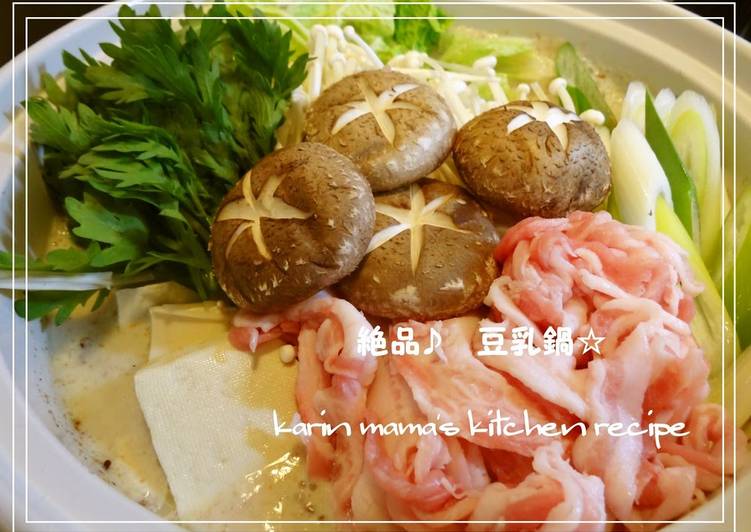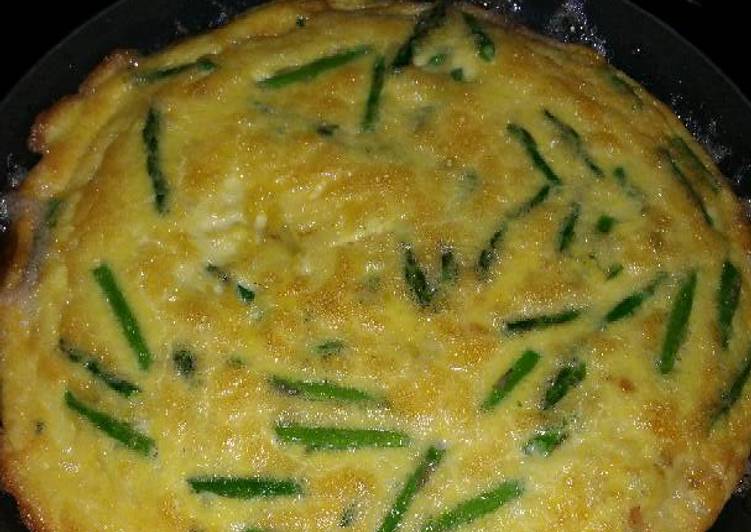
Hey everyone, I hope you’re having an amazing day today. Today, we’re going to prepare a special dish, really delicious soy milk nabe (hotpot). One of my favorites food recipes. This time, I’m gonna make it a bit tasty. This is gonna smell and look delicious.
Delicious Japanese Soy Milk Hot Pot recipe with napa cabbage, mushrooms, and thinly sliced pork cooked in a creamy and savory soy milk broth. The broth has a really delicate flavor. Due to the soy milk in the broth, the taste is naturally sweet and creamy.
Really Delicious Soy Milk Nabe (Hotpot) is one of the most favored of recent trending meals on earth. It is easy, it’s fast, it tastes yummy. It’s appreciated by millions daily. They are fine and they look wonderful. Really Delicious Soy Milk Nabe (Hotpot) is something which I’ve loved my whole life.
To get started with this particular recipe, we have to prepare a few components. You can cook really delicious soy milk nabe (hotpot) using 11 ingredients and 9 steps. Here is how you can achieve it.
The ingredients needed to make Really Delicious Soy Milk Nabe (Hotpot):
- Prepare 500 ml Soy milk
- Get 800 ml Water
- Make ready 2 to 3 pieces Kombu for dashi stock
- Make ready 1 handful Bonito flakes
- Take 80 ml Shiro-dashi
- Get 50 ml Sake
- Take 5 tbsp Ground sesame seeds (white)
- Prepare Ingredients for the hotpot:
- Prepare 1 as much (to taste) Pork belly (for shabu shabu)
- Get 1 as much (to taste) Tofu
- Get 1 as much (to taste) Chinese cabbage, white part of leek, chrysanthemum greens, shiitake mushrooms, enoki mushrooms, etc.
They often show popular motsunabe restaurants on local television, and I watched it thinking "OK, they use chicken soup made from a chicken Regular hotpots are good, but mild and creamy soy milk hotpot is delicious! A Beginner's Guide to Japanese Hot Pot Cooking Get ready to eat the most It certainly doesn't hurt that nabe is really delicious. It's also very warming and was However, you could experiment with chicken stock, Japanese curry, soy milk, or tomato. Get the recipe for Japanese Soy Milk Hot Pot (Tonyu Nabe).
Instructions to make Really Delicious Soy Milk Nabe (Hotpot):
- If possible, soak the kombu in water and leave overnight. If you don't have time, heating the water with the kombu, and remove it just before the pot comes to a boil.
- Remove the kombu, let the broth come to a boil, add the bonito flakes (a big handful!) and let it cook for 4 to 5 minutes.
- Turn off the heat and leave for 1-2 minutes. When the bonito flakes sink to the bottom, remove with a scum skimmer or a perforated ladle while squeezing them out.
- Add the sake and shirodashi, and bring to a boil.
- Put in the soy milk and ground sesame seeds. It's a bit rich and salty since it will get more watery when the vegetables are added. If it's too salty, dilute with water.
- Don't let the broth boil or it will separate. The soup base is done. Just put whatever ingredients you like and enjoy!
- We like it with pork belly! Delicious eaten with yuzu pepper paste.
- Basic hotpot soup recipe:
- Hakata-style motsu hotpot - You can use the basic soup base to make motsu (giblets) hot pot too! - - https://cookpad.com/us/recipes/171559-lightly-flavored-hakata-style-motsunabe-offal-hot-pot-with-soy-sauce-based-soup
Then turn heat down to medium and add in the warm soy milk. Allow it to simmer while stirring occasionally. Add in miso paste and grounded sesame seeds. Nabe (also called hot pot, shabu shabu, nabemono, 鍋) are the simmered Japanese soups and stews that keep us warm and satisfied when temperatures dip. And while this shrimp and lemon loaded nabe recipe uses primarily Japanese ingredients, many Asian cultures.
So that’s going to wrap this up with this special food really delicious soy milk nabe (hotpot) recipe. Thanks so much for reading. I am sure that you can make this at home. There is gonna be more interesting food in home recipes coming up. Remember to bookmark this page on your browser, and share it to your family, friends and colleague. Thanks again for reading. Go on get cooking!


